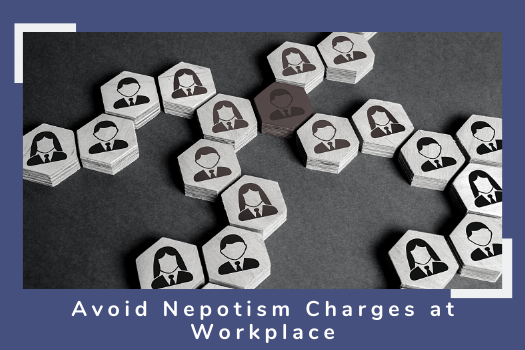Fostering collaboration and quality communication will be key to success in this new work culture.
Dr. Emily Kate Reeves is an Associate Professor at Midwestern State University, Texas. She is Ph.D. from Texas Tech University. As an Associate Professor, Emily is responsible for the following courses Applied Research, Content Reading, Developmental Reading, and Methods of Teaching Language Arts. She has several research papers accredited to her name. Some of the recent ones are
- Mann, A., Reeves, E.K., McIntyre, C.J., & Curry, D.L. 2020. Co-Teaching in Professional Development Schools: The Gradual Release of Responsibility. National Association of Professional Development Schools Special Issue
- Reeves, E. & Bain, A. (2019). Health Literacy in the United States of America: Cost Perspectives. London International Conference on Education (Vol. 2019, pp. 171-177). London, UK: Infonomics Society. doi:10.2053/LICE.2019.0044 (publication with my GA)
- Reeves, E. K & Cartwright, A. M. (2019). Public opinion and perception of language barriers to critical literacy for global citizenship. Literacy Information and Computer Education Journal (LICEJ), Volume 10, Issue 1, ISSN: 2040 2589
- Cartwright, A. M., Reeves, E., & Curry, D. L. (2019). Mutually beneficial growth in culturally responsive teaching. In N. P. Gallavan & L. G. Putney (Eds.) ATE teacher education yearbook XXVI, building upon inspiration and aspirations with hope, courage, and strength (v.2): Tomorrows leaders in classroom and schools (pp 119-134), Lanham, MD: Rowman and Littlefield.
Thank you, Emily, for agreeing to do this interview with us. Kindly be as candid as you can.
Lets Start!!!
How does the pandemic year affect you? What changes, professional and personal, does it bring into your life?
This has included many changes both positive and negative. I was fortunate to be able to continue working from home, so the shift was to maximizing my work from home. This included establishing a routine such as office hours and balancing working from home with being a mom to our 10-year-old son (now 4th grader). After the summer, we decided to be in school was best, so we moved to a small private school where he could attend in-person classes. This has been ideal for him and without the pandemic, I would have never considered the change so although the decision was made from a place of distress, the outcome has been exceptional. As well, we have finetuned the family bubble at this stage in the pandemic. I joke all the time about my 2-mile bubble, but it is as real as it can get. We have specific stores we know are taking precautions for safety, doctors, etc. and I have managed to widdle down everything to be within our 2-mile bubble. Yes, this means some things maybe 4 miles apart but all the same, commuting is almost nothing. This includes my sons school -1/2 a mile walk the transition has definitely a huge win for the family.
The new normal requires a new definition for work-life-balance. In your role, do you think work-from-home is a boon or a bane? What were the new lessons you learned about work-life balance?
I think work at home is a boon. I am at least 75% more productive working from home. And that is being modest. Without all the commuting, unnecessary meetings, interruptions, and schedule challenges I can move full steam ahead on projects, zoom at a moments notice, and am far more responsive to my students. Yes, I am sometimes on-call a bit too much but with that, I have greater flexibility to also take care of my son. **Actual work production is up, and I am a better mom than I was a year ago. Boom, boom.
The year 2020 was particularly challenging for everyone. We were forced to embrace certain changes in life. According to your experience, what were the key OPPORTUNITIES and THREATS females employees came across?
Absolutely. The threat was being expected to start operating as a full-time stay-at-home mom while maintaining a career. It took me a few months to pull back, reflect, and regroup (including finding the private school option). I am happy to say I have grown from this experience because after I came to terms with what shifts I needed to make; the threat became an opportunity for growth. I also acknowledge that I am very privileged because I - 1. Was able to keep working from home and 2. Have private school as an option for my son. Not everyone is in the same situation and I acknowledge there is a difference.
What are your perceptions about Online or Digital Education? What impact it will be making in shaping the personality of future generation or future leaders?
When implemented using quality pedagogy, online education can be remarkably effective. My classes shifted to being online and hybrid when Covid hit last spring. My preference is hybrid for undergraduate students - particularly when a practicum is an option. This is really the best of both worlds. Students are able to work through content online and participate in online discussions, etc. structured to encourage engagement and peer collaboration and then practice what they are learning in the field. My graduate students are working online in terms of our specific course but conducting research in their classrooms, so they are not truly 100% online. All of that is to say that I do not think all online education looks the same and so it is exceedingly difficult to make a blanket statement. Some online courses are worthless. In terms of shaping future leaders - online education allows access and this is critical when reaching diverse populations. With access comes diversity and with diversity comes a wider pool of qualified leaders. In my opinion, this is the biggest benefit of online education. When access does not become a barrier - leaders who would not have otherwise had the opportunity will start rising.
TRUST plays an important role in the success of a team, more so in a virtual environment (work-from-home). In your experiences, what Team Leaders are doing differently to develop and sustain trust among team-players?
In my experience, we all take turns leading on different projects and operate like a virtual family. Every person on our team wants us to be successful and with that knowledge, even when not perfect, there is a trust in the team that allows mistakes to be made and corrected in a positive way. I think it is about perspective and positionality and understanding that every member has something to contribute. Rotating who takes the lead based on strengths is a simple way to acknowledge that each member brings something to the table and is valued. When team members feel valued, their buy-in tends to be much higher.
Lastly, in the new normal, some employees will be mandatorily working from the company premises, some will be allowed to permanently work-from-home, and others will be following a hybrid schedule. How do you foresee the future workplace? What will be the prominent elements of NEW work culture?
I think the pandemic has certainly opened some eyes in terms of what the most productive and cost-effective way to run a business looks like. I do not believe we will ever go back to all employees working on the company premises this is especially true with white-collar jobs. I think we will see more work-from-home and hybrid jobs available. As the workforce shifts to meet expectations in this new work culture, I think some key points employers will focus on are:
- Training: Many employers already have extensive training modules for working online, etc. I think during the pandemic many races to get their training up to speed to meet the needs of their workforce at a moments notice and they will not want to lose that momentum. There may be fine-tuning, changes, and some challenges that have been identified but I think many are already on this path.
- Collaboration: Fostering collaboration and quality communication will be key to success in this new work culture. Using platforms like Zoom and Teams and making them mandatory especially during business hours may become the new standard if it is not already.
- Initiative/buy-in: Employees that have buy-in to the project, task, or whatever they are working on tend (I believe) to show more initiative and put more effort into the action item. Fostering a sense of responsibility and buy-in will help encourage employees to take initiative and go above and beyond the minimum. This is where quality has an opportunity to grow.






